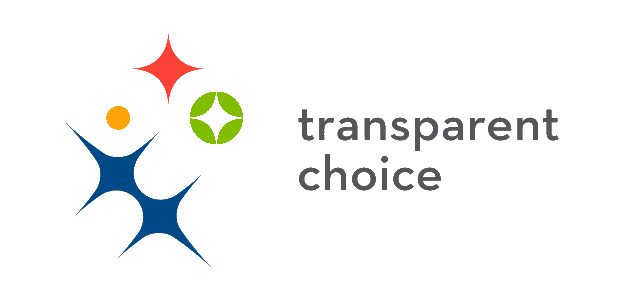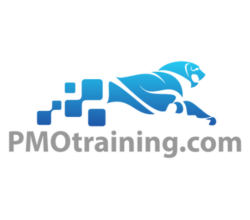Four Ways to Ensure Employer/Employee Success in a Remote Work Environment
I’ve been a remote project manager since 2016. I’ve seen team members and leadership struggle with successfully delivering projects in a remote work environment. It really doesn’t have to be so difficult. I’ve built tons of successful relationships and networks while being fully remote. Let me show you what’s important using both sides of the story! We live in a remote world now. In the last few years, people have been working from home more than ever before. So, how do we make this sustainable and effective? How do we minimize the impacts of the perceived drawbacks of remote work? Well, it’s all about building trust and effective relationships on both sides. We’ll explore how remote employees can set themselves up for success by being present, proactive, and accountable while also setting boundaries both at home and with work. We’ll also look at ideas employers can follow to enable their employees and companies to flourish while everyone is remote related to training, understanding, trust, and respect.
Remote work is the future but it takes effort on both sides to make it effective. Let’s talk about how!
Courage, Culture and Communication
When it comes to leading change, compassion without accountability gets you nowhere, but accountability without compassion gets you alienated. The good news is that you no longer have to choose. Compassionate Accountability is a both-and breakthrough that resets our mindset and leadership behaviors to embrace the synergy between compassion and accountability. Join Karin Hurt’s CEO conversation with best-selling author, Nate Regier, where he shares the big idea from his new book, Compassionate Accountability, reveals the secret behind a Compassion Mindset, and describes practical examples of how project managers can build connection AND get results at the same time.
Master any WORKPLACE CONFLICT with CONFIDENCE AND EASE, have LESS DRAMA, BETTER RESULTS, and THRIVE AT WORK.
Destress your workday, foster collaboration, and calm difficult customers.
Available NOW.
Engr. Mark Burnett
Project Manager & Author of The Ambidextrous Project Manager™
Resilience in Project Management: Navigating Challenges and Overcoming Adversity
Introduction to Resilience:
- Define resilience in the context of project management.
- Explore the importance of resilience in navigating challenges and overcoming adversity.
- Set the stage for the discussion on building resilience in project management.
- Reinforce the importance of resilience in project management.
- Empower attendees to apply resilience-building strategies in their own projects.
Kind Transparency – Say What You Mean Without Being a Jerk
Welcome to Kind Transparency: Leading with Authenticity. In this interview, we delve into the crucial aspects of leadership, influence, and stakeholder engagement. Join us as we explore practical strategies for fostering genuine connections, inspiring others, and navigating complex organizational dynamics with authenticity. Get ready to enhance your leadership skills and create positive impact with Kind Transparency as your guide.
Love ‘Em or Lose ‘Em: Getting Good People to Stay
Many managers are uncomfortable hearing or using the word “love” in the workplace. But, given the employee “defections” of the last year, maybe it’s time they got over it. Both research and experience dedicate that if employees don’t feel valued, appreciated – dare I say “loved”? – they will eventually leave.
Managers have always struggled to keep their best employees, but that challenge has become particularly intense during The Great Resignation. Perhaps because employees now expect what they previously only hope for – meaningful work, supportive bosses, regular resignation, and a chance to learn and grow. So, how can today’s managers meet these expectations? By following some simple advice that has been around for more than 20 years.
Scott Mautz
Speaker, Trainer, and Author of “The Mentally Strong Leader: Build the Habits to Productively Regulate Your Emotions, Thoughts, and Behaviors”
How to Become Mentally Stronger
Mental strength is the ability to productively regulate your emotions, thoughts, and behaviors, even in adversity. It’s how you manage internally, so you can lead better externally. In today’s increasingly chaotic, distraction-laden work world, building the habits that increase your mental strength is how you train your brain for achievement. It’s why mental strength is THE leadership superpower of our times.
In this session, learn how to become mentally stronger by building the 6 core mental muscles that equate to mental strength (fortitude, confidence, boldness, decision-making, goal-focus, and messaging).
Using Human-Centered Design to Enable Team Engagement
The presentation is meticulously crafted to empower team leaders and members by deepening their understanding of key principles in psychological safety, Positive Intelligence™, neuroscience, and leadership. Its core aim is to equip participants with the knowledge and practical skills required to foster an environment of engagement and inclusion within their teams. By incorporating interactive, hands-on activities based on human-centered design (HCD), the presentation facilitates the application of these concepts in real-world settings. Participants will gain valuable insights into creating a collaborative and inclusive team culture, emphasizing the importance of open communication, mutual respect, and creative collaboration.
This initiative focuses on enhancing team dynamics and performance, guiding attendees through the process of implementing strategies that promote psychological safety and leverage neuroscience insights for better team functioning. The integration of Positive Intelligence™ principles further enriches the learning experience, offering innovative approaches to leadership that can transform team interactions and outcomes.
Participants will leave with a comprehensive toolkit for building high-functioning, diverse teams that excel in creativity and collaboration. The ultimate objective is to lead participants towards fostering team environments that are not only more successful in achieving their goals but also more fulfilling for each team member. Through this presentation, attendees will be empowered to create lasting changes in their teams, leading to enhanced collaboration, increased engagement, and superior performance.
Navigating Workplace Conflict: How to Have More Influence, Less Drama and Better Collaboration
AI Governance and gaurdrails
AI governance ensures fair, legal, and goal-aligned AI use in companies. It encompasses ethical use, compliance, risk management, data security, and performance monitoring.
Guardrails prevent misuse and maintain trust by addressing biases, ensuring accountability, safeguarding against attacks, and providing transparency.
The PMO aligns AI with strategic goals, allocates resources, manages projects, communicates effectively, adheres to regulations, monitors progress, and facilitates adaptation to AI technologies.
Implementing such frameworks is crucial for preventing discrimination, complying with laws, mitigating risks, maintaining trust, and aligning AI initiatives.
Meet the Players in Projectland: Decide the Right Project Roles & Get People on Board
- Do most projects really fail? Why?
- How does understanding the players in Projectland help us succeed
- What is Projectland and why is it different from business-as-usual?
- What are the roles you’re likely to encounter in Projectland?
- Do you know who your stakeholders are and what to do about them?
- Can you really get the right people in the right roles and focused on the win?
Plus, get behind-the-scenes insights from the publisher and author.
PLAN TO JOIN US!



































